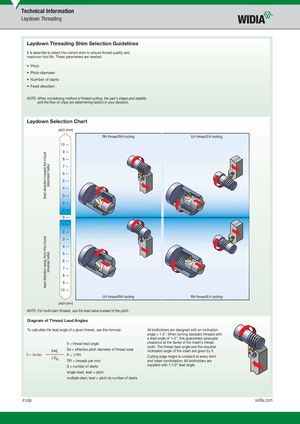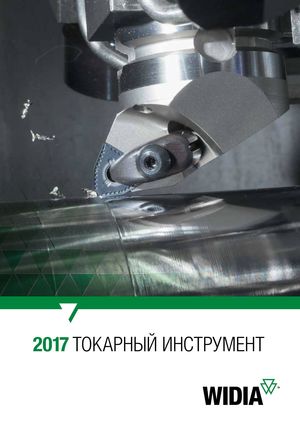Общий каталог Widia 2017 - страница 698
Навигация
- Table of Contents
- Turning
- Turning • ISO Inserts
- Turning • Tools for External Turning and Internal Boring
- Turning • Tools for External Turning and Internal Boring
- Turning • Tools for Small Hole Boring
- com E1Turning • Grooving and Cut-Off
- Turning • Threading
- Indexable Milling
- Indexable Milling • Face Mills
- Indexable Milling • Chamfer Mills
- Indexable Milling • 90° Shoulder Mills
- Indexable Milling • Helical Mills
- Indexable Milling • Slotting Mills
- Indexable Milling • Copy Mills
- Solid End Milling
- Solid End Milling • High-Performance Solid Carbide End Mills
- Solid End Milling • General Purpose Solid Carbide End Mills
- Solid End Milling • High-Performance High-Speed Steel (HSS-E/PM)
- Solid End Milling • Burs
- Holemaking
- Holemaking • High-Performance Solid Carbide Drills
- Holemaking • Modular Drills
- Holemaking • Indexable Drills
- Holemaking • Modular Drills
- Holemaking • Indexable Drills
- Holemaking • Hole Finishing
- Tapping
- Tapping Portfolio
- Index by Order Number
- Index by Catalogue Number
- Global Contacts
- Informational Icons Guide
- Material Overview • DIN

feed direction toward the chuckfeed direction away from the chuck (standard helix)(reverse helix) Technical Information Laydown Threading Laydown Threading Shim Selection Guidelines It is essential to select the correct shim to ensure thread quality and maximum tool life. These parameters are needed: • Pitch • Pitch diameter • Number of starts • Feed direction NOTE: When considering method of thread cutting, the part’s shape and stability and the flow of chips are determining factors in your decision. Laydown Selection Chart pitch (mm) RH thread/RH tooling LH thread/LH tooling 10 — 9— 8— 7— 6— 5— 4— 3— 2— 1— 0— 1— 2— 3— 4— 5— 6— 7— 8— 9— 10 — LH thread/RH tooling RH thread/LH tooling pitch (mm) NOTE: For multi-start threads, use the lead value instead of the pitch. Diagram of Thread Lead Angles To calculate the lead angle of a given thread, use this formula: All toolholders are designed with an inclination angle = 1.5°. When turning standard threads with a lead angle of 1–2°, this guarantees adequate ß = thread lead angle clearance at the flanks of the insert’s thread tooth. The thread lead angle and the required P•S De = effective pitch diameter of thread wear inclination angle of the insert are given by ß. ß = Arctan P = 1/TPI/ DeTPI = threads per inch Cutting edge height is constant at every shimand insert combination. All toolholders are S = number of starts supplied with 1-1/2° lead angle. single-start, lead = pitch multiple-start, lead = pitch (x) number of starts F100 widia.com
 Каталог Widia токарный инструмент 2017
Каталог Widia токарный инструмент 2017 Каталог Widia трохоидальное фрезерование
Каталог Widia трохоидальное фрезерование Каталог Widia техническое руководство по разверткам
Каталог Widia техническое руководство по разверткам Каталог Widia фрезы со сменными пластинами 2016
Каталог Widia фрезы со сменными пластинами 2016 Каталог Widia достижения 2020
Каталог Widia достижения 2020